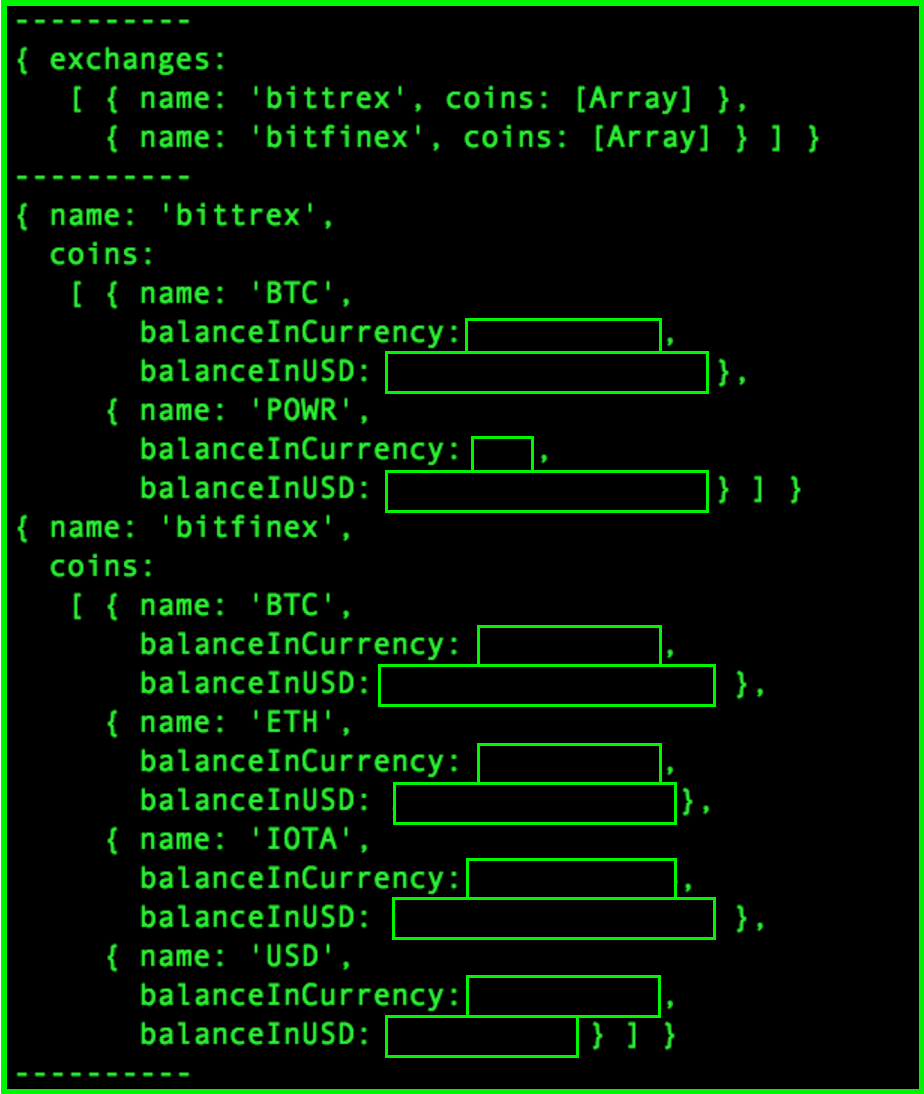A library for cryptoasset investors to access their portfolio
In the cryptosphere, there are many investors that spend their time on cryptoasset exchanges. Even though it is considered to be unsafe, traders still will keep their funds short term trades and others. Since many investors use multiple exchanges (because they all differ in many ways), it is difficult to keep track of one's portfolio and true asset value.
DACP serves as a way for investors and traders to access personal information from the exchanges they use. The main focus of the repository is to gather an investor's holdings and the value from the cryptoasset exchanges they use in one central dataset named the balanceDataset. Another project that is in development is the transactionDataset, a dataset which aims to hold an investors trading transactions in one dataset, which can be useful in assessing the profitability of a certain transacetion and much more.
The repository will use CCXT, a library that accesses the API from cryptoasset exchanges, to pull all the information needed from the particular exchanges.
If you are a beginner to using git and github, please look at the resources provided to learn the steps needed to use DACP.
Once the repository has been forked, and that has been cloned, find a directory through terminal to place the DACP directory on your computer. Once inside the DACP folder, call the following function.
npm install
This should download everything needed for the directory to function. Follow the next steps to fill in your exchange information.
There are certain security protocols used to privatize user personal information on exchanges. In order to access the API, a user needs to ask for an API key in order to be authorized to access the personal information.
DACP uses a .env file to hold all the API keys and secrets needed to access the personal information in the given exchanges. The software also needs an array to be filed in before running. Follow the next two steps to properly set up the software.
In the directory of your project, create a .env file. You can do this in the terminal, or using a text editor application. To do this in the terminal, navigate to the current project directory. Type touch .env and hit enter. Then type open .env and hit enter. This would have opened a .env file in a text editor.
Add the API key and secret key as follows:
EXCHANGENAME_apiKey=YOURAPIKEY
EXCHANGENAME_secret=YOURSECRETKEY
For example, if I were using bitfinex, I would enter my keys in the .env file on separate lines as follows. Remember, you can add as many exchange keys as you want.
bitfinex_apiKey=MYAPIKEY
bitfinex_secret=MYSECRETKEY
Once you have entered all keys and secrets for the exchanges you would like to add to the dataset, save and close.
This file is included in the .gitignore to ensure that contributors do not share their personal information while contributing.
In the balanceDataset.js file, the is an array named myExchanges. In this array, list the exchanges that you would like to access by using the exchange id (please refer to the CCXT Manual for the proper format of the exchange id). The array should be formatted as shown below.
By using the .env file and the myExchange array as the two inputs, the software will output a JSON of the balances of the coins in the exchanges.
The balance is shown in both the given coin (meaning how much of the specific coin is owned), as well as the value of the holding in USD. Currently, the software only works with the US Dollar as the base currency. The following is an example of what the output looks like (with the numbers hidden for privacy reasons).
CCXT offers functions, symbols and commands generalized for all exchanges in order to ease the use of the exchange API's. The functions used in the DACP library consist of the calls to access current price in a market, fetching a balance, fetching markets, and others.
In order to get the USD equivalent value for each holding on a particular exchange, the software needs to look for a connection to the US Dollar through it's markets. If there is a direct connection to the USD, it chooses that immediately. If not, will search through connections that can be made through base coins such as BTC and ETH. If there is no connection to USD on the exchange, the software will look at Bitfinex (a notable exchange that offers BTC/USD and ETH/USD markets) to get the price from BTC or ETH to USD.
The price of the coin in USD is then multiplied by the balance of the coin to show its value in USD.
The path needed to find a connection from the coin currency to USD is printed in the terminal to show how the conversion was done.
This repository is licensed under the MIT License. Details can found in the license file.
Help is greatly appreciated as long as people follow the Contributing rules and the Code of Conduct.
Please refer to the to do list to see where help is needed.

